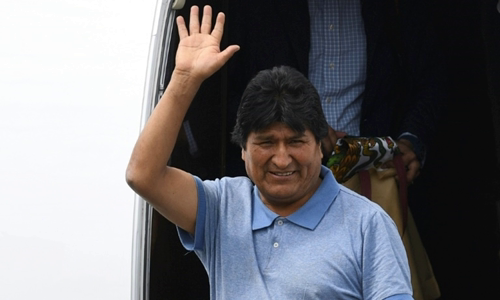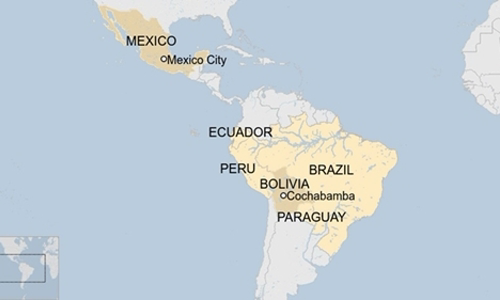In Latin America, which is shaken by political change and upheaval, the presidential refugee flight of Morales is not easy.
"It is a journey across Latin American politics and the risks facing the region," Mexican Foreign Minister Marcelo Ebrard said.

Former Bolivian President Evo Morales arrived in Mexico on November 12 Photo: AFP
Bolivian President Evo Morales, 60, resigned on November 10 after protesters took to the streets to protest against his fourth term as president, and he lost support from the army and police. Mexico sent an air plane to pick up Morales on the afternoon of November 11, after Morales called Ebrard for asylum.
The plane arrived in Lima, Peru and stopped here to wait for permission to enter Bolivia's airspace. It took off at night when authorized by Bolivian authorities but then turned around when they revoked the order.
According to Ebrard, "no one knows who decides what" in Bolivia. Morales's resignation left a vacuum of power because those who could succeed him as vice president and other top officials also left.
After returning to Lima, the aircraft was finally given a "green light" and entered Bolivia to pick up Morales at Chimore airport in Cochabamba. "The situation at that time was very difficult and tense because the situation at the airport, where Evo Morales waited, was quite complicated. The army was inside and his supporters surrounded the building outside," Ebrard said. .
Location of Latin American countries. Graphics: BBC.
Their plan was to fly back to Mexico on the old route, stopping in Lima for supplies. However, air traffic control stations in Peru prohibit aircraft carrying Morales over their airspace.

Location of Latin American countries Photo: BBC
Mexico moved to plan B. They asked Argentine President Alberto Fernandez to call Paraguay's President Mario Abdo to ask for supplies there. Ebrard said the plane had taken off in "tiny space" to reach Asuncion, Paraguay.
When Ecuador also refused to allow them to use airspace, the plane traveled along the Brazilian border with Bolivia and Ecuador, then flew out into the Pacific Ocean, on international waters.
Morales' flight lasted a total of 16 hours, twice as long as planned. Mexican crews worked more than 24 hours for this mission.
This is not the first time Morales has had a troubled flight for political reasons. In 2013, when returning from a trip to Moscow, European authorities demanded that his plane be diverted to Austria and searched it after it was rumored that Edward Snowden, a former CIA agent, revealed confidential information. about US espionage activities, go along. The countries concerned, France, Spain, Italy and Portugal later apologized.
Disembarking in Mexico on November 12, Evo Morales laughed and held up his fists, calling himself the victim of a "coup".
He praised Mexican President Andres Manuel Lopez Obrador as his "life saver". "As long as I live, we will still follow the political path and continue to struggle," Morales said.



 PascaleBlangenois
PascaleBlangenois







